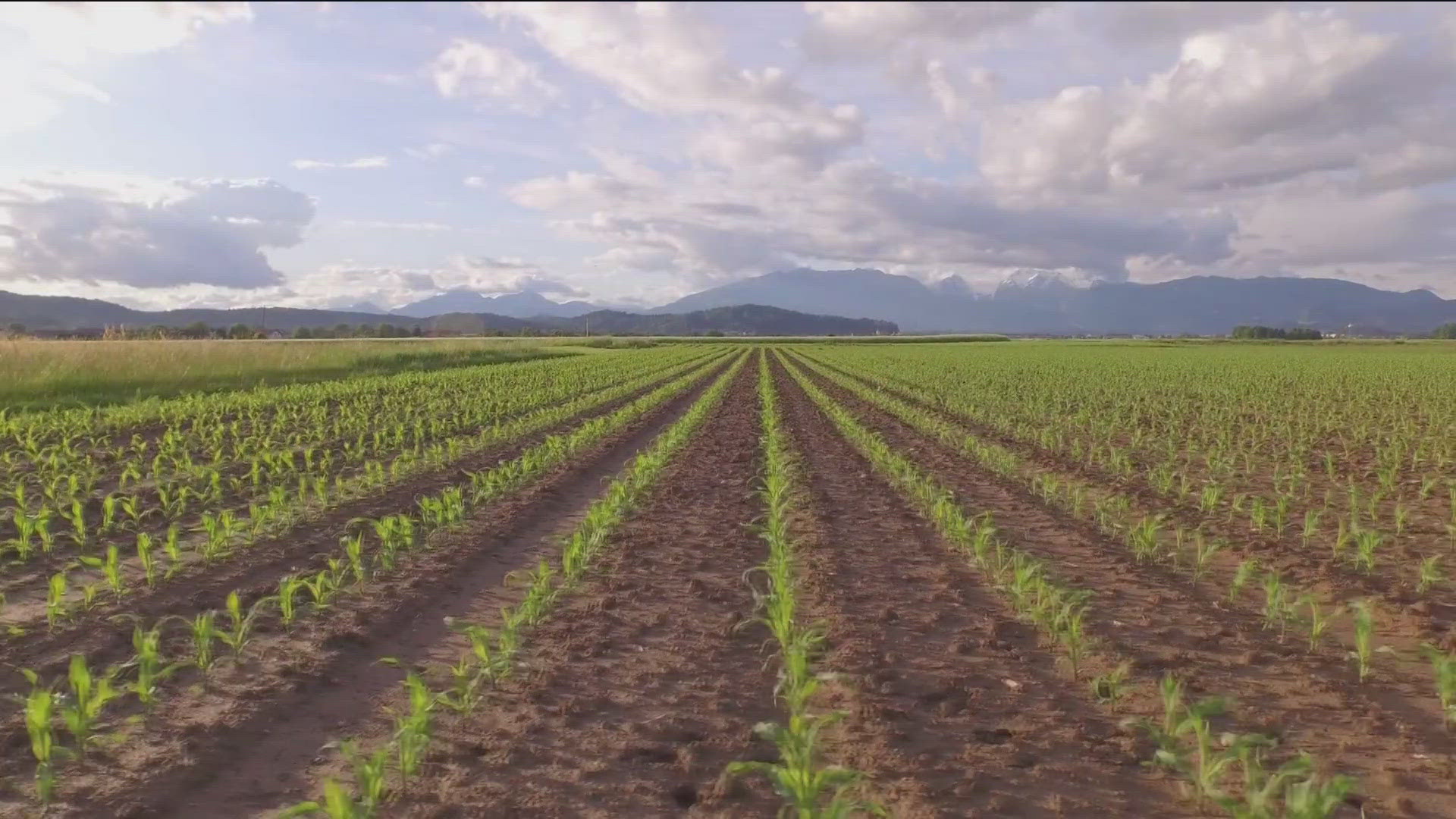BOISE, Idaho — Idaho's loss of farmland has become a familiar story. The loss of land is a concern for farmers and a state that relies on agriculture as a major economic driver.
In June 2024, the U.S. Department of Agriculture released its 2022 Census of Agriculture. It reported between 2017 and 2022, Idaho lost 144,000 acres of working land.
Working land includes farms, ranchland and timber.
"If it's sold off to a developer, it's never going to be production ag again, whether that's for cattle to graze on, or whether that's to produce food," said Bryan Searle, president of the Idaho Farm Bureau Federation.
Searle said pressure from development and growth in the state is driving land prices up causing a shift in what’s happening to working land.
"Being a farmer myself, we are risk takers, and we're price takers, so there's no guarantee on what we'll actually receive out of a crop,” said Searle. “There's years we lose money, and it's a roller coaster. So all of a sudden the competition comes in that, hey, we'll buy your land and for very high prices."
Data from the U.S. 2020 Census shows Idaho was the second fastest-growing state in the country.
"We're seeing something that we have not seen in the past, for the fact that people are fleeing out of some of the states for various reasons to come to Idaho," said Searle.
Redfin, an online real estate company, reports the number of homes sold in Canyon County in July is up 40% over the same month compared to last year.
In Ada County, the number of homes sold is up more than 21%.
Magic Valley farmer Rick Brune said the change east of the Treasure Valley looks different.
"One of the big issues here is where solar and wind farms are starting to compete with farmland, and we can't compete with those types of rents," said Brune.
It’s not an easy decision for farmers and ranchers to sell their life work, and one others involved in the agriculture industry don’t fault them for making.
"If you have a strong offer on the table and you've worked your whole life, you've earned that, so I totally understand if folks want to cash in and retire," said Miguel Villfana.
Villafana is a Treasure Valley farmer. He said he’s seeing fewer young people get into farming.
"The resources available, the bank, the bank loans available, they require a down payment assistance, or the Farm Service Agency requires that you be farming for three or more years. So, starting out of the gate, trying to buy land is extremely difficult, " said Villafana.
For people who dedicate their lives to farming and ranching, the future is a concern.
“I feel like farmers are really good at still feeding the world, and we won't see necessarily a shortage in food supplies locally,” Villafana said. “But I do worry about the long term, once all the land is developed and it's gone, where's our food going to come from?”
Within the last two years, the farmland preservation committee drafted a policy to slow the loss of land.
It’s known as Agricultural Protection Areas. It passed the Idaho Legislature this session.
Tristan Winegar, a 5th generation farmer and president of the Washington County Farm Bureau, said the policy evolved after a county development meeting.
“We knew the idea that we wanted. We wanted to protect our farm around and protect Idaho, the state, and so we came up with this policy,” Winegar said. "We wanted a voluntary way for farmers to protect themselves, their way of life and their farm ground from development."
The APA is in its early stages, with Winegar saying the goal is to add financial incentives for farmers, alleviating commodity prices for farmers.
"It's going to take several years, but it is a great steppingstone, and it was, we consider it a big win," said Winegar.

